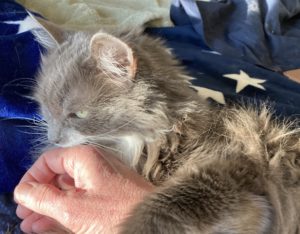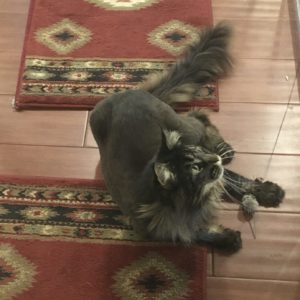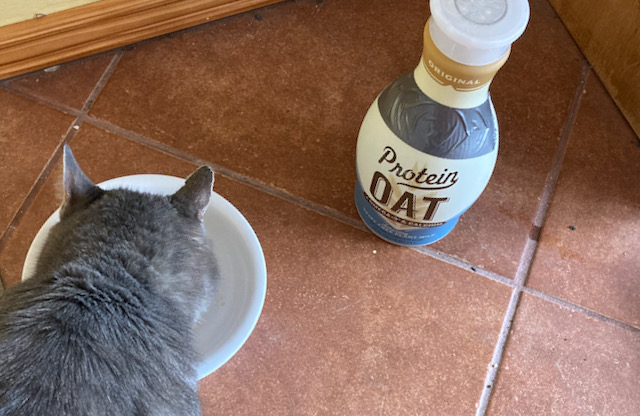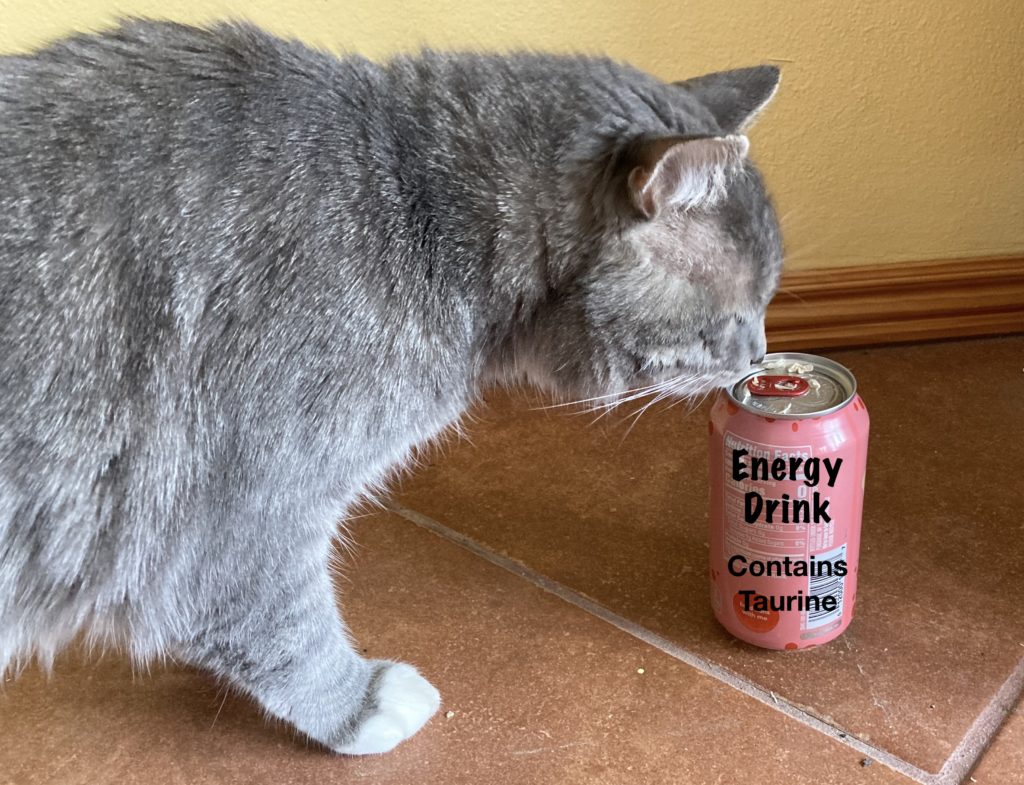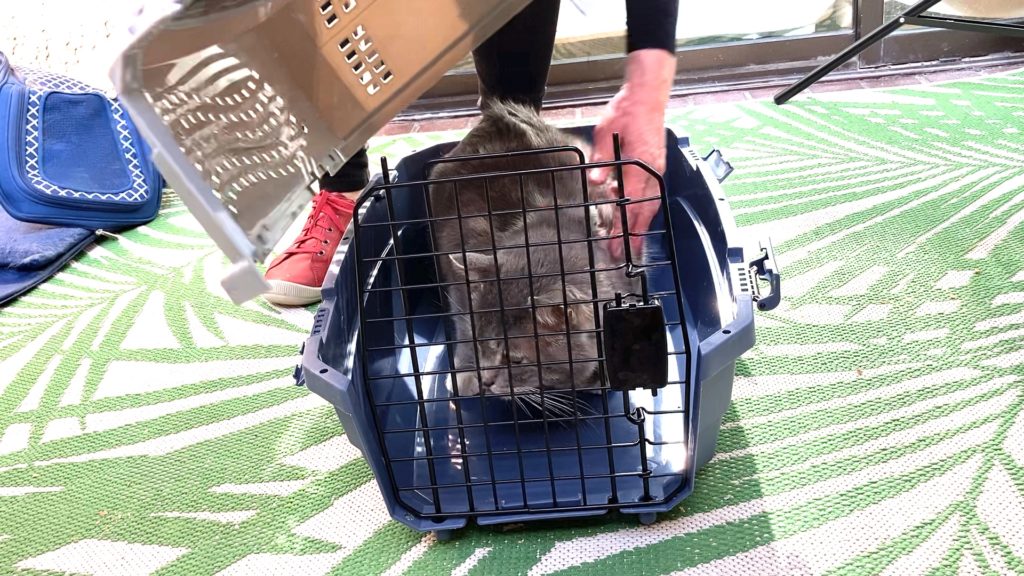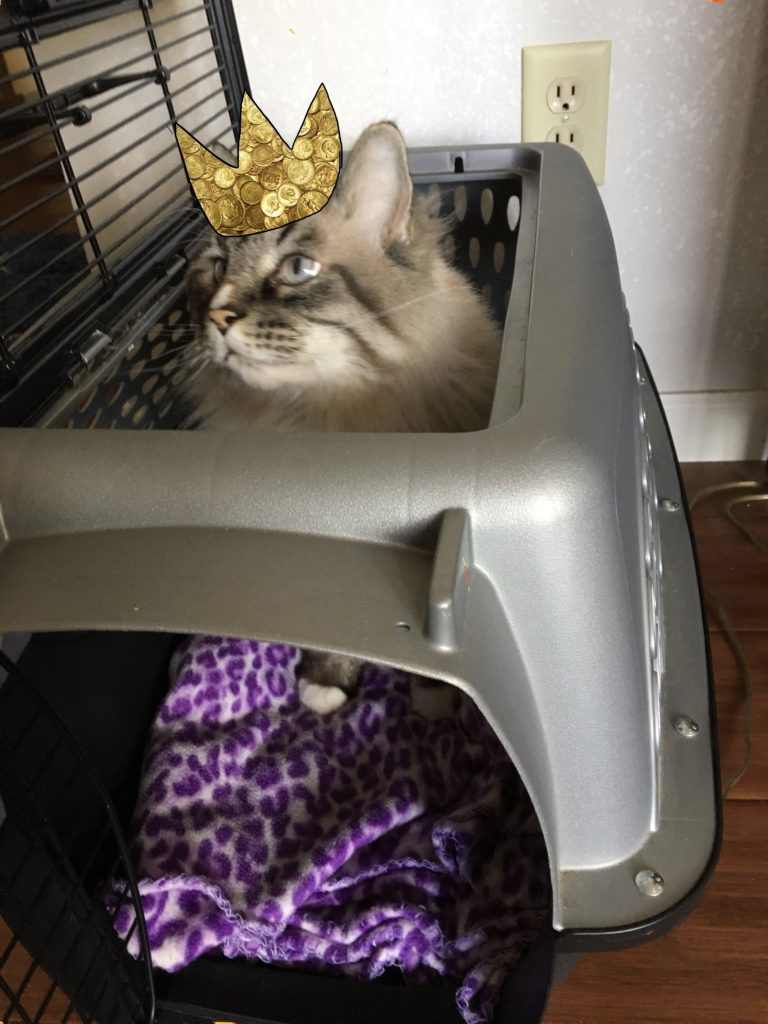Cats Protecting Other Cats?
I take my cats on walks around my townhome complex. The grounds are quiet with mature trees and open spaces between the clusters of homes.
The other day, Zelda, the Maine Coon cat, and Gus, my ex-street cat, were ambling along the sidewalks, stopping to smell things and poke around in the vegetation. Zelda was a few feet away from me. Gus was over noodling around in what was left of a snowbank.
A mixed breed terrier (about 25 lbs or so) lives in one of the townhomes near where we were walking. She is an active little dog who usually runs around to check out the cats but typically the cats stand their ground and the dog is recalled by her owner.
Today was different. The terrier rounded the corner behind us and made a beeline for Zelda. Startled, Zelda ran; I lunged for Zelda but was not quick enough and the dog went off in hot pursuit. Zelda runs like a baby elephant – she is not a sprinter! The dog was closing in on Zelda.
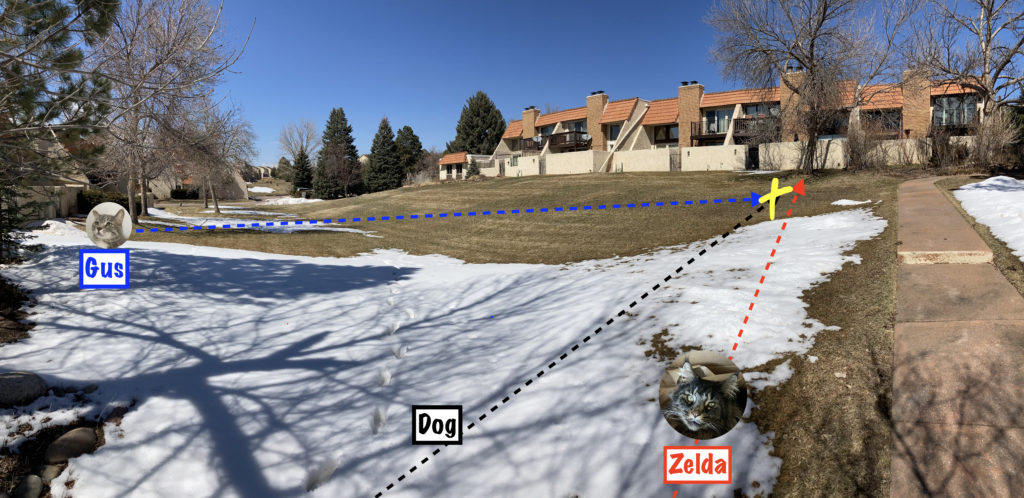
I started after her when something grey streaked by on my left – Gus was running with the terrier in his sights! He reached the terrier just as she was reaching Zelda and collided with the dog. The terrier returned to her owner tout de suite!
Gus turned his attention to Zelda. At first, I was worried about a possible cat fight, but he proceeded to herd her back to the front door of our house. I found the two of them sitting quietly by the front door. Needless to say, our walk was over for the moment.
I did not expect that Gus would run the terrier dog off but I was sure glad he did, because I was not going to get there in time to prevent any injury to the dog or Zelda.
We expect this kind of behavior from mother cats protecting kittens but not from cats that did not grow up together.
Cats are known to be solitary hunters that group together to take advantage of plentiful food sources. Cats do not hunt together like a lion pride but the females can share the work of raising and feeding the kittens as do lions. What motivated Gus to help his housemate?
There are numerous videos online where cats protect children, dogs run off coyotes attacking cats, and mother cats protect their kittens from dogs and humans. Videos of cats protecting other cats are scarce. Of course, the video would be hard to get – the last thing I was thinking about was filming the whole thing!
Years ago, a similar incident happened with my two older cats, Athena and Marley, while on our daily walk. Marley had gone ahead to the pond. I was behind Athena when a large red fox (they weigh about 30 lbs) showed up on the walk. Athena froze. Before either Athena or I had a chance to move, the fox bolted past us with Marley on his heels. Once the fox was on his way, Marley returned and greeted both Athena and me.
Why would a cat be aggressive toward another species in these situations?
- Threat to his territory?
- Threat to a his own safety?
- Hunting trigger – was the dog or fox behaving like prey?
- Cats protecting other cats?
Why not avoid the predator, slink away and keep yourself safe?
Although the myth persists that male cats will eat kittens, many cat colonies have affiliated male cats. These males will band together with the female cats to protect the kittens from strange male cats(Organization in the Cat: A Modern Understanding) Presumably, the colony might band together to a drive off a threat such as a coyote or pack of dogs.
Gus was a community cat – he grew up living with other cats on the streets. Perhaps Gus has experienced a situation when he was a street cat where his group of cats banded together to protect the kittens or the colony from a pack of dogs. Although he and Zelda did not grow up together, they groom each other’s heads when meeting, indicating that they are part of a social group, an ad hoc “colony”.
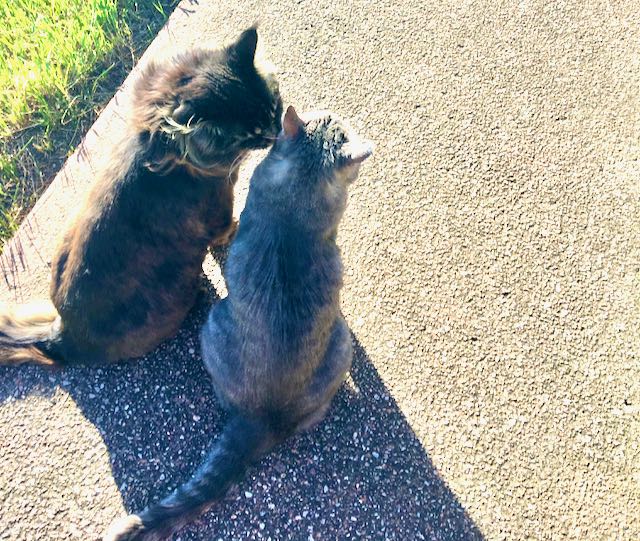
More than just the availability of food “glues” the cat colony together. Perhaps another benefit is member cats protecting other cats: they have “got each others’ backs!”

